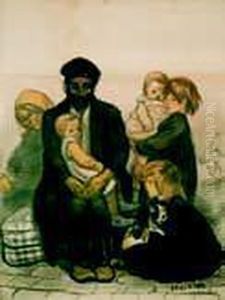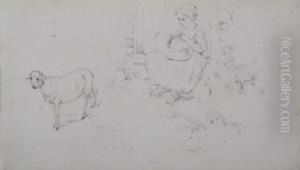Marius Steinlen Paintings
Théophile-Alexandre Steinlen, commonly known as Théophile Steinlen, was a Swiss-born French Art Nouveau painter and printmaker. Born on November 10, 1859, in Lausanne, Switzerland, Steinlen studied at the University of Lausanne before taking a job as a designer trainee at a textile mill in Mulhouse in eastern France. In 1881, he moved to Paris, where he would spend most of his life. There, he was embraced by the bohemian community of the Montmartre district, which included artists, writers, and philosophers.
Steinlen's work depicted the lives of the working class and the bohemians of Paris, with a special focus on the cabarets and the city's more marginalized populations. He is perhaps best known for his iconic poster 'Le Chat Noir' (1896), which advertised a tour by the entertainers of the famous Montmartre cabaret of the same name. Steinlen's illustrations and posters became emblematic of the vibrant cultural scene of the time.
Beyond his famous commercial works, Steinlen also created numerous paintings, murals, and book illustrations, as well as sculptures and political cartoons. His work often expressed his socialistic ideals and his empathy for the plight of the urban poor. Steinlen's illustrations appeared in various leftist publications, including 'Gil Blas', 'Le Mirliton', 'L'Assiette au Beurre', and 'Le Rire'.
Steinlen's artistic legacy is characterized by his compassionate portrayal of everyday life and his commitment to social commentary. His works are preserved in many major museums and collections around the world. The artist continued to work until his death on December 13, 1923, in Paris. His influence can be seen in the works of other artists who also documented the human condition with both realism and sentimentality.

